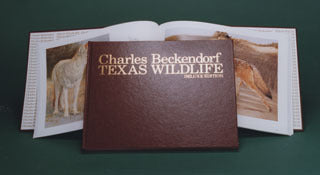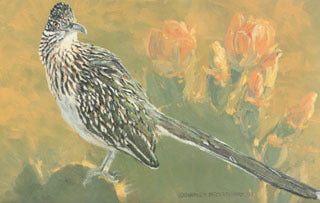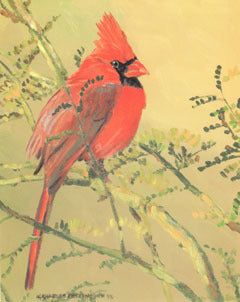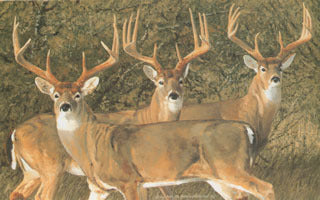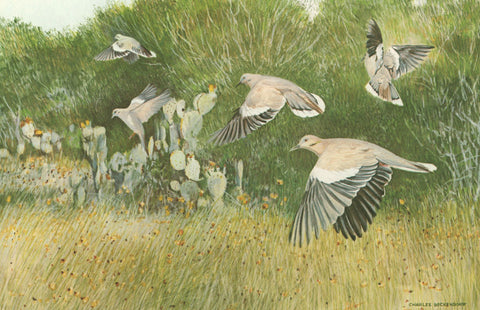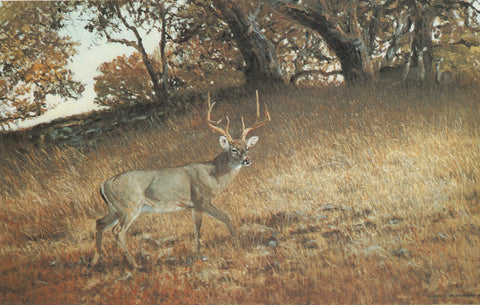
H-17 Whitetail Buck
Color Reproduction | By Charles Beckendorf
Additional Information
The white-tailed deer became a major source of food and clothing for the settlers of the early 1800s. Venison and buckskin sustained many pioneers in their first years before they planted crops and stocked domestic animals.
This image is from the Charles Beckendorf Texas Wildlife book. The original was an acrylic painting on canvas (1992) and the size is approximately 14 X 11 inches. The total edition size of this print is 500.
The price for an unframed print is $35.00 and the price of the print framed and matted with glass is $115.00. To see a larger image of the framed print, right click the image and click on "open link".
shipping is $25.00 for framed print
This is a part of the Texas Wildlife Art Prints Collection.
Color Reproduction
The white-tailed deer became a major source of food and clothing for the settlers of the early 1800s. Venison and buckskin sustained many pioneers in their first years before they planted crops and stocked domestic animals.
This image is from the Charles Beckendorf Texas Wildlife book. The original was an acrylic painting on canvas (1992) and the size is approximately 14 X 11 inches. The total edition size of this print is 500.
The price for an unframed print is $35.00 and the price of the print framed and matted with glass is $115.00. To see a larger image of the framed print, right click the image and click on "open link".
shipping is $25.00 for framed print
This is a part of the Texas Wildlife Art Prints Collection.
Beckendorf color reproductions are developed using four color process printing on fine white paper. This advanced technique utilizes separate color plates for each of the primary colors, plus black. High-resolution digital scans and special process inks are utilized to yield beautiful, accurate reproductions.
About the Artist - Charles Beckendorf
Charles grew up in Mathis, Texas, where he had the opportunity to spend hours on large ranches. Generous land owners gave him permission to wander freely over their ranches and he observed creatures in their natural surroundings. He developed a lifelong love of nature, whether it be in the tiniest of flowers or the largest of animals. It was at this time that he became a true naturalist.
We Also Recommend
REVIEWS

